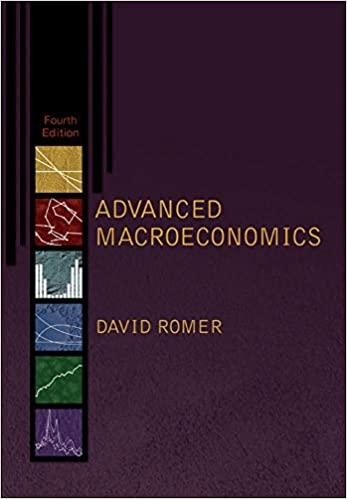7.8. (This follows Ball, 1994a.) Consider a continuous-time version of the Taylor model, so that p (t)
Question:
7.8. (This follows Ball, 1994a.) Consider a continuous-time version of the Taylor model, so that p (t) = (1/T)
T
τ=0 x (t − τ)dτ, where T is the interval between each individual’s price changes and x (t−τ) is the price set by individuals who set their prices at time t − τ. Assume that φ = 1, so that p∗
i (t) = m(t); thus x (t) = (1/T)
T
τ=0 Etm(t + τ)dτ.
(a) Suppose that initially m(t) = gt (g > 0), and that Etm(t + τ) is therefore
(t + τ)g. What are x (t), p (t), and y(t) = m(t) − p (t)?
(b) Suppose that at time 0 the government announces that it is steadily reducing money growth to zero over the next interval T of time. Thus m(t) = t [1 − (t/2T)]g for 0 < t < T, and m(t) = gT/2 for t ≥ T. The change is unexpected, so that prices set before t = 0 are as in part (a).
(i) Show that if x (t) = gT/2 for all t > 0, then p (t) = m(t) for all t > 0, and thus that output is the same as it would be without the change in policy.
(ii) For 0 < t < T, are the prices that firms set more than, less than, or equal to gT/2? What about for T ≤ t ≤ 2T ? Given this, how does output during the period (0,2T) compare with what it would be without the change in policy?
Step by Step Answer:







